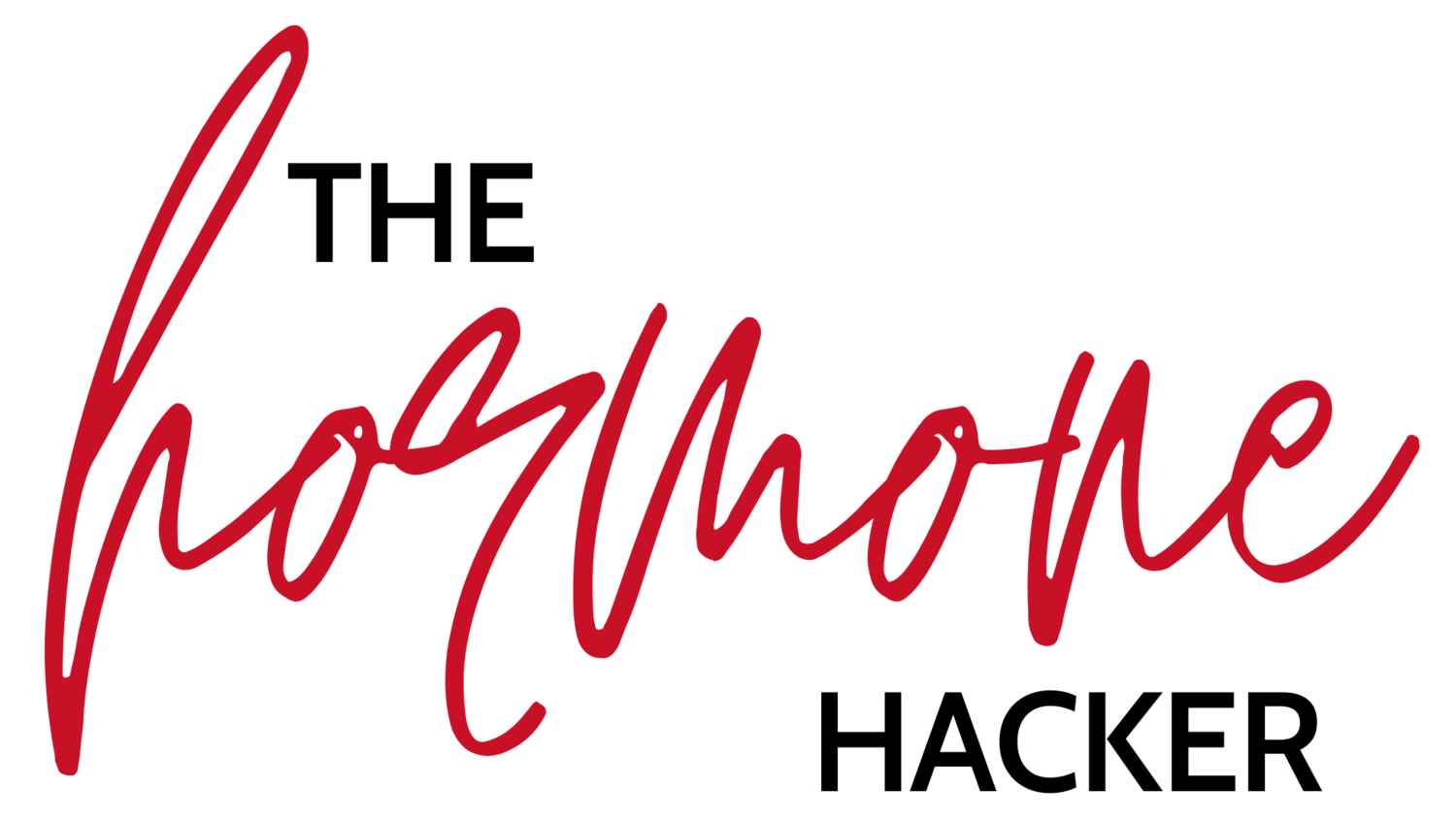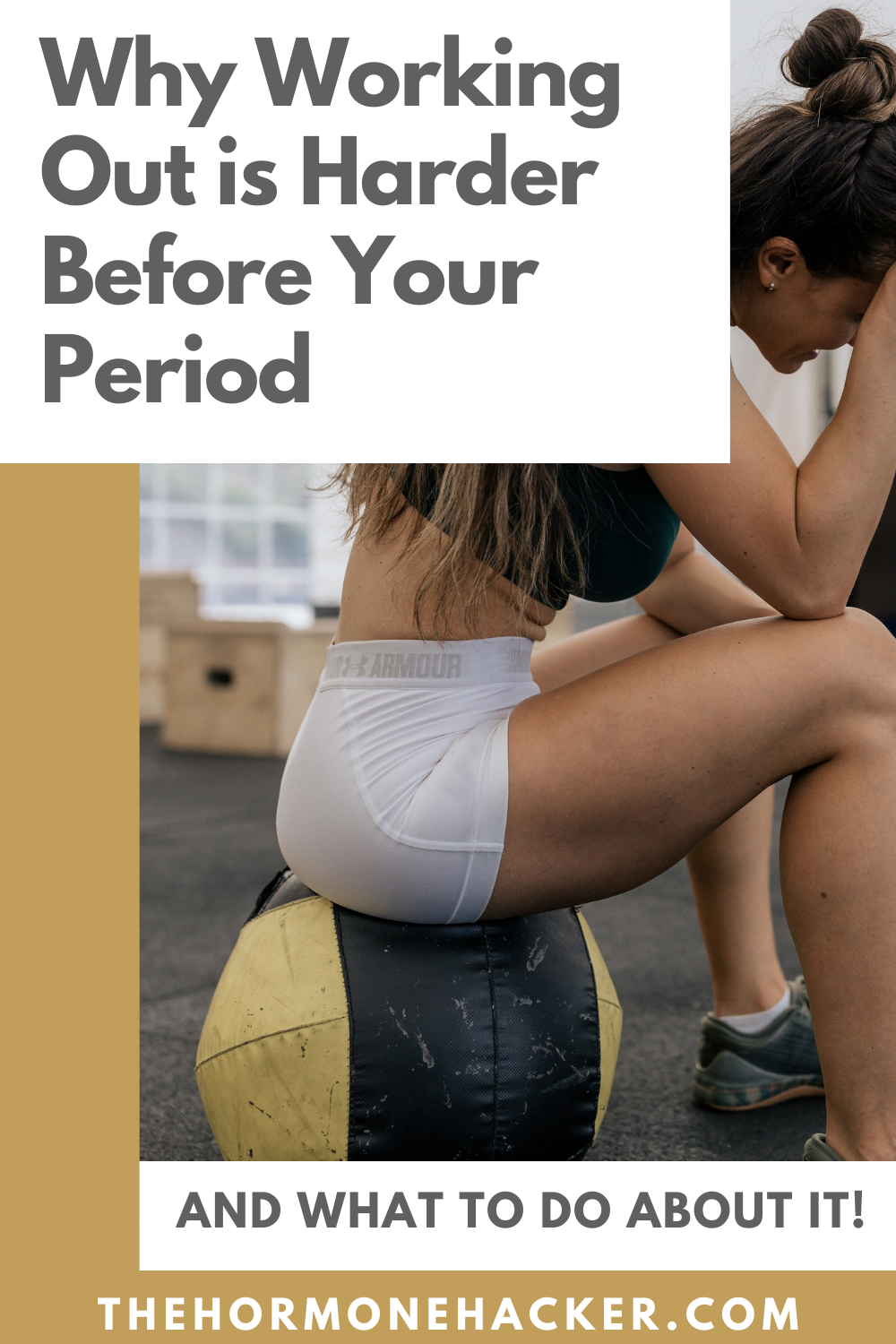Feel more sluggish in your workouts the week before your period? It’s not just you. It’s biological!
The changes across your menstrual cycle affect the way your body responds to workouts.
Quick biology reminder: the “follicular phase” describes the part of your cycle that’s before you ovulate (release an egg). The “luteal phase” describes the part of your cycle that’s after you ovulate.
You likely feel quite a difference in energy and mood between those two phases!
Progesterone is the luteal phase’s dominant hormone, and it’s a key factor when looking at your workouts. If you boil it down to evolution, your body is trying to protect itself and keep you calm and rested just in case you could possibly be pregnant— even if you’re definitely not pregnant.
So, the presence of progesterone chills you out energy-wise, and makes you seek out relaxation and extra sleep. That response rolls over into your fitness plans and has the following effects.
Luteal phase effects on exercise:
The rise in progesterone elevates body temperature, and plasma volume drops.
Your blood is thicker (due to lower plasma volume), so oxygen takes longer to travel among your muscles.
Metabolism is higher (so you eat more during this phase).
Energy dips due to the drop from pre-ovulatory levels of testosterone and estrogen.
It’s harder to burn carbs (so low-intensity endurance is fine, but high-intensity workouts require eating more carbs beforehand).
Heart rate and respiratory rate increase.
What all that might feel like:
You feel hotter, but it’s harder to sweat and cool off.
You feel hungrier before/after working out.
You struggle to hit the fast paces or lift the same weight as you could in the past weeks (you may perceive your exertion to be higher at the same intensity as before).
Breathing is more labored.
It takes longer to recover between sets/repeats.
It takes longer to recover between workouts.
Motivation decreases.
How you can deal:
Prioritize protein within 30 minutes after exercise to prevent muscle breakdown.
You might need to eat a bigger pre-workout snack than usual. (Even if you work out right after waking up, at least eat something small first.)
If you feel worse while working out premenstrually, you can opt to schedule lower-intensity workouts leading up to your period (e.g. long runs) and plan higher intensity workout in the other weeks (e.g. track spring workouts).
Modify your training plans as needed. Plan your hardest workouts of the month for the follicular phase (before ovulation) and make your recovery or taper days happen sometime in the luteal phase (after ovulation). Your training cut-back week can perfectly fit with the last week of your menstrual cycle.
Take a sodium-based electrolyte drink/tablet before exercising.
Make sure you recover fully between workouts with proper rest and refueling.
Ensure you eat enough healthy fat, vitamins and magnesium.
Schedule exercise with a friend when motivation is low but you feel like moving.
Get a handle on PMS symptoms (which might make exercise feel worse).
TRACK YOUR CYCLES so you can predict when these changes will occur!
The good news:
Most menstrual cycle performance research so far shows that adverse effects come from negative cycle-related symptoms. Your VO2 max and lactate threshold remain static throughout the cycle, so you can still perform your best at any time of your cycle! You just might need to prepare more for exercise in your luteal phase in order to balance out all those extra factors that didn’t affect your body in the follicular phase.
Your cycle keeps your body balanced by ensuring you get a variety of movement and workouts over the weeks and months.
You’ll get fitter by fitting in tough workouts into your schedule, and many menstruators prefer to take their recovery days in the last few days of the cycle (the days just before getting your period).
By using your luteal phase as a chance to focus on lower impact endurance, injury rehabilitation and recovery, you’ll ensure your body is healthy and ready to go next cycle. It’s intuitive and strategic!
Ready for next steps?
Read this blog post about syncing exercise to your cycle.
Download my free Beginner’s Guide to Cycle Syncing below. You’ll start living in sync with your hormonal flow in no time!
Do you adapt the way you train throughout your cycle? What do you notice about exercising in the luteal phase?
Sources
Baker FC, Driver HS. Circadian rhythms, sleep, and the menstrual cycle. Sleep Med. 2007 Sep;8(6):613-22.
Janse DE Jonge XA, Thompson MW, Chuter VH, Silk LN, Thom JM. Exercise performance over the menstrual cycle in temperate and hot, humid conditions. Med Sci Sports Exerc. 2012 Nov;44(11):2190-8.
Sims, Stacy T. Roar: How to Match Your Food and Fitness to Your Female Physiology for Optimum Performance, Great Health, and a Strong, Lean Body for Life. Rodale, 2016.

